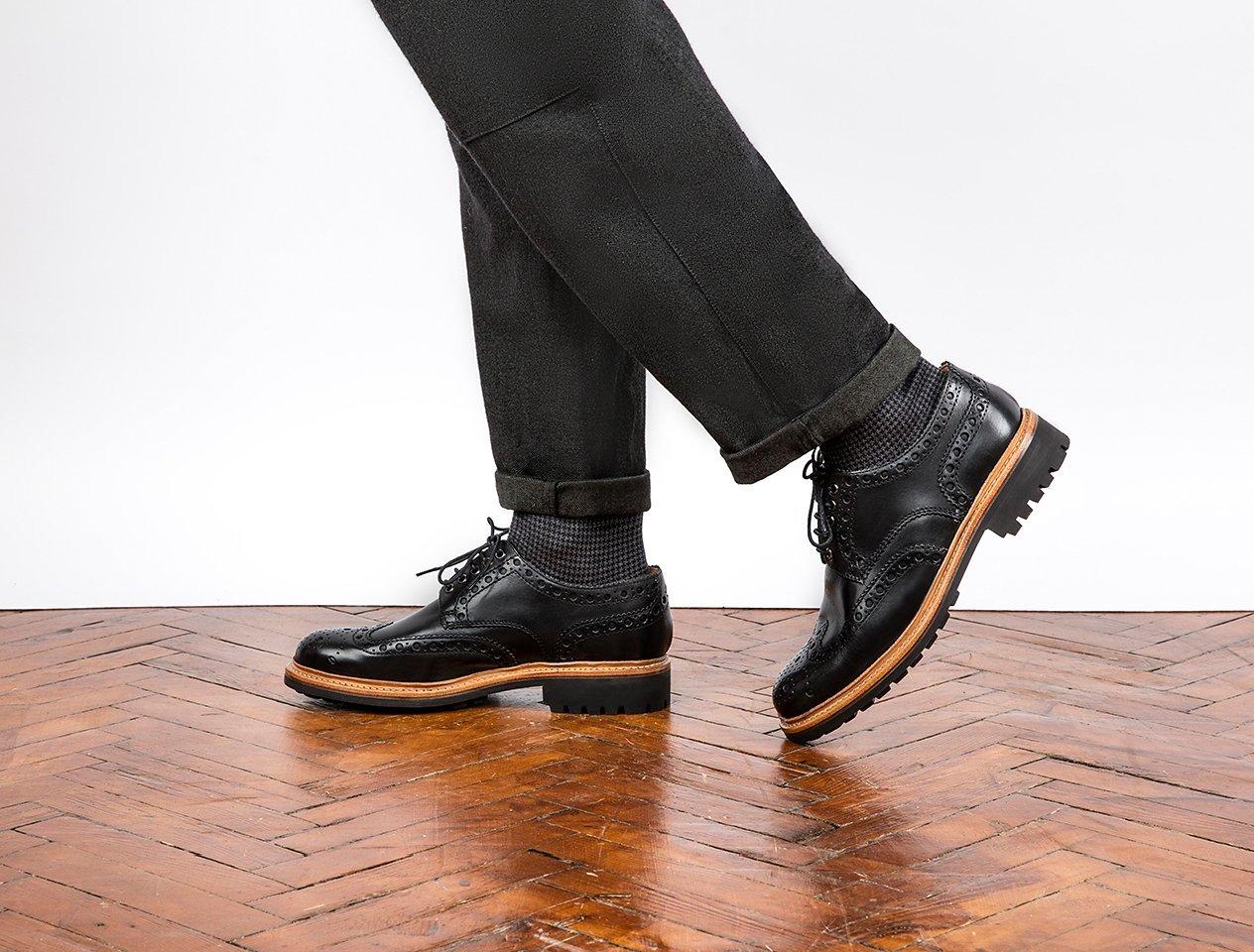Grenson: the footwear brand worn by Britain’s best dressed
We sit down with Tim Little, the owner and creative director of Grenson, to discuss craftsmanship, longevity and what’s next for the brand
When Tim Little gave up his decade-long career in advertising to pursue his love of footwear design and save Nottingham-based shoe maker Grenson, it is no understatement to say that it was a step (pun intended) into the unknown.
Ten years, one factory move and five shops later, Grenson has become the footwear of choice for everyone from Sir Elton John and Keanu Reeves to Louis Theroux and rapper Labrinth. We sat down with Little to find out what initially drew him to buy the brand, his relationship with John Lewis & Partners and how he keeps pace with the world of fast fashion.
Can you take us through Grenson’s history and what it has taken to get the brand to where it is today?
‘The company was founded in 1866 and saw growth through the 20th century, partly aided by the two World Wars. This saw a huge increase in capacity to make shoes and boots for the British army, but by the early 2000s it started seeing competition from abroad, along with the fact that men were moving towards more casual styling. In 2005 we began to rebuild the business by making it more relevant and modern without losing the importance of its heritage.’
Speaking of heritage, how important is British-made and designed to the brand?
‘We’ve made shoes both in our own factory here and overseas for the past 60 years. British-made is crucial to us as it’s our heritage and the source of our expertise. It’s important to keep the craft alive in this country. We design everything in our studio at the factory.’
The manufacturing process is obviously paramount for Grenson and you have been using the Goodyear welt [the process by which the upper is attached to the sole] since the company started. Why are these old techniques so important?
‘There are many different ways to make a shoe but the most respected is the Goodyear welted construction. It takes a long time and is expensive to do, but it results in a very strong shoe that lasts for years. First, the leather is cut into pieces according to the upper patterns. These pieces are then stitched together and pulled over a shoe last [wooden mould], which will take the shape of the shoe. On the bottom of the last is the insole and a thin leather band or “welt” is attached to it. The sole is then stitched to the welt before it’s trimmed, waxed, painted and finished.’
And what about the triple welt that has become one of your trademarks?
‘The triple welt is a technique that makes it look like the shoe has three stepped welts on the side of the shoe. It was developed in the factory by our craftsmen and it demonstrates the quality of British welted shoes. It’s a very beautiful product.’
Grenson has a unique aesthetic which has contributed to its enormous success. How do you ensure you’re staying ahead of the curve?
‘We follow what’s going on in the marketplace and we listen to our wholesale partners. We also look at trends and see if they are relevant to us. It's also important to do things that nobody has done to remain fresh – but it always has to feel like a Grenson product.’
How do you balance style and functionality in your designs?
'The perfect shoe is the balance between the two; we have to achieve both. Generally, I think that style is instant and is a big part of the buying decision whereas functionality is only discovered after the shoes have been worn. We have to get both right.’
How would you describe the Grenson man?
‘We tend to describe him more by attitude: he likes authentic products, he wants quality but he doesn’t want to be old fashioned and he likes nice things but wants to get fair value.’
If a customer was just starting to build his collection of Grensons, which is the best pair to start with?
‘I'd definitely start with a sturdy pair of brogues or our classic 5 eyelet Derby shoes.’
How important is it to you to be partnering with the likes of John Lewis & Partners?
‘I grew up visiting John Lewis in Nottingham where my mum did a lot of her shopping. It's important to us that we work with people who offer good service on the high street and John Lewis & Partners is the gold standard.’
What’s next for the brand?
‘Just keep going! So far it's worked very well so we have no reason to change what we do.’







